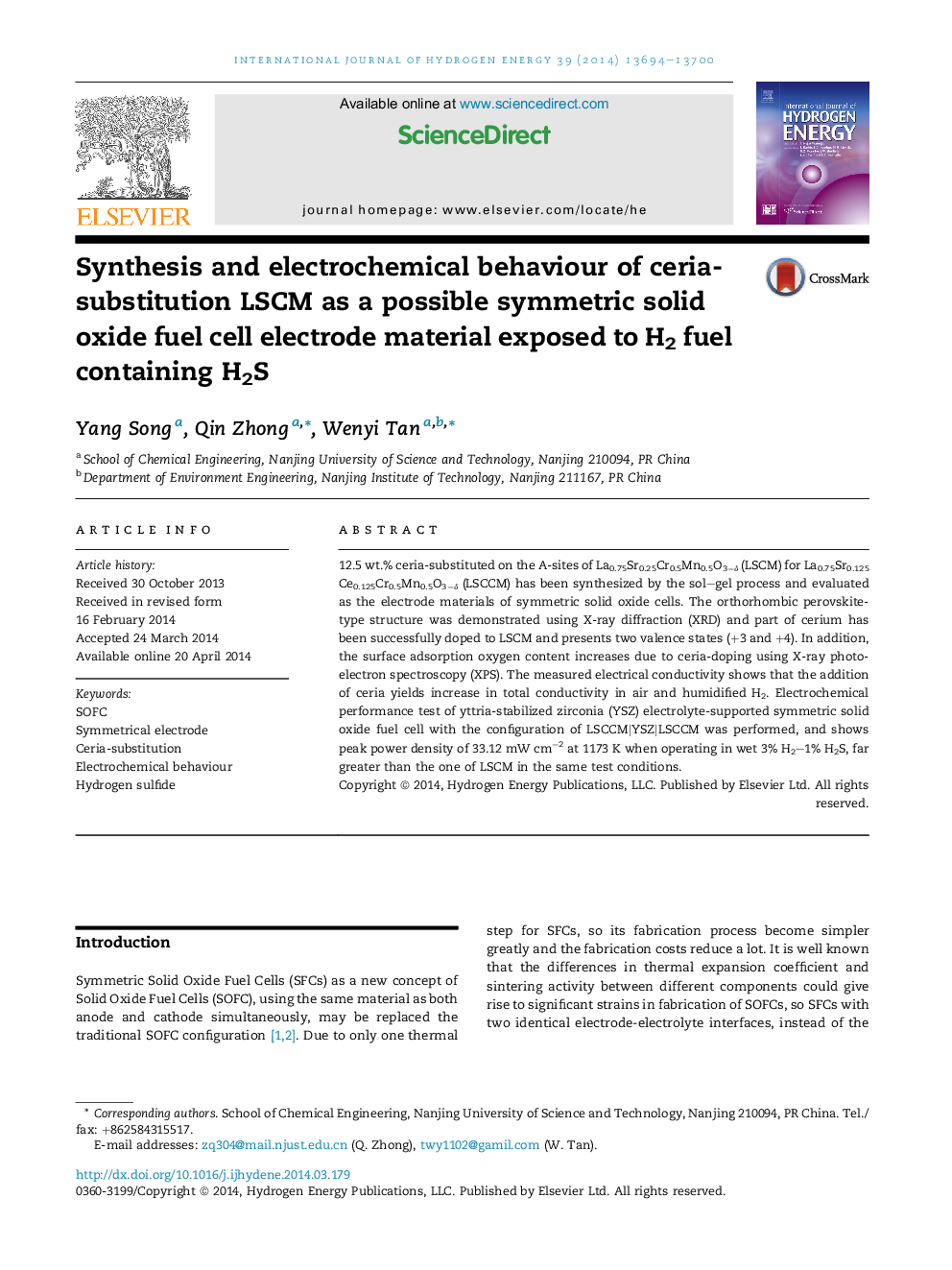| Article ID | Journal | Published Year | Pages | File Type |
|---|---|---|---|---|
| 1272673 | International Journal of Hydrogen Energy | 2014 | 7 Pages |
•The crystallite size of LSCCM gets smaller with ceria-substitution on the A-site.•The surface adsorption oxygen content of LSCCM is higher compared with LSCM.•The total conductivity of LSCCM increases in air and humidified H2 compared with LSCM.•The maximum power density enhances markedly after doping ceria in wet H2–H2S.
12.5 wt.% ceria-substituted on the A-sites of La0.75Sr0.25Cr0.5Mn0.5O3−δ (LSCM) for La0.75Sr0.125 Ce0.125Cr0.5Mn0.5O3−δ (LSCCM) has been synthesized by the sol–gel process and evaluated as the electrode materials of symmetric solid oxide cells. The orthorhombic perovskite-type structure was demonstrated using X-ray diffraction (XRD) and part of cerium has been successfully doped to LSCM and presents two valence states (+3 and +4). In addition, the surface adsorption oxygen content increases due to ceria-doping using X-ray photoelectron spectroscopy (XPS). The measured electrical conductivity shows that the addition of ceria yields increase in total conductivity in air and humidified H2. Electrochemical performance test of yttria-stabilized zirconia (YSZ) electrolyte-supported symmetric solid oxide fuel cell with the configuration of LSCCM|YSZ|LSCCM was performed, and shows peak power density of 33.12 mW cm−2 at 1173 K when operating in wet 3% H2–1% H2S, far greater than the one of LSCM in the same test conditions.
Graphical abstractFigure optionsDownload full-size imageDownload as PowerPoint slide
